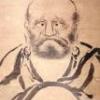-
Posts
2,866 -
Joined
-
Last visited
-
Days Won
12
Content Type
Profiles
Forums
Events
Store
Downloads
Gallery
Everything posted by Shugyosha
-
Unfortunately, if artists don't sign in block capitals, my small store of knowledge is exceeded. Would you mind posting a picture of the second tsuba please Colin? It looks very nice from the what you've shown so far.
-
Hi Steven, It's traditionally made and I'd agree with David that it's a shinto blade: the condition of the tang points that way and, for me, the overall shape looks like that which was in vogue around Kanbun so 1660s would be my guess. Unsigned shinto blades aren't very desireable for non-military sword collectors, but an antique blade in kai gunto mounts might have some appeal to you military sword guys - sorry, can't say anything about the fittings as they aren't my thing.
-

Large naginata auction on Yahoo Japan
Shugyosha replied to Gerry's topic in Auctions and Online Sales or Sellers
Sorry Gerry, I didn't know that it had papers as I couldn't access the auction site without a password and was relying on the photos you posted here. Unfortunately, I don't know the answer to your question, instinctively I would say that one would possibly pass Hozon as "being worth of preservation" but probably not TH but then outliers do crop up from time to time. That very open grained look is something that you get with acid polishes as it tends to eat into the grain of the metal and produce a similar effect to what you see in the blade you posted, to a greater or lesser extent. As the blade was on a Japanese auction site, it didn't seem too much of a leap to think that someone had got creative to try to make an ordinary blade more attractive to westerners or had simply used a quick and dirty way to make an out of polish blade more presentable. As an aside, did you know that the blade had papers when you posted? -

Large naginata auction on Yahoo Japan
Shugyosha replied to Gerry's topic in Auctions and Online Sales or Sellers
Hi Gerry, To me that doesn't look like natural wear from normal polishing. I'd suggest that it is the product of an acid polish and, given the state it's now in with most of the natural activity obscured and what looks like fake hitatsura, I think it is going to be a futile exercise trying to kantei it. -
Welcome to the forum Kai. Unfortunately, you don't get much buyer's remorse for $130 these days.
-
Hi Lewis, Have a look at Michael's post in this thread on the subject which might help you come to a conclusion. I can't draw a firm conclusion and it doesn't help (me) that this is an older form of the kuni kanji. To my eyes the second horizontal stroke off the central diagonal in "kuni" looks like it might run in the opposite direction to normal and the bottom stroke of the enclosure is a possibility too but less obviously so. The long horizontal bar on "mitsu" also looks like it has been done right to left to me but it's finger in the air stuff. I think the best opinion you will get would be from @Nobody san.
-
Those are the kanji but I think you need another reading for them “Banjuu” is one possibility but there may be others.
-
@Spartancrest and @When Necessary Good eyes!
-
Hi Darren, I'll go first to get the easy bit - the large characters on the right read "Mizusashi": 水指
-
-

WW2 samurai sword
Shugyosha replied to Jeff Simmons1012's topic in General Nihonto Related Discussion
Hi Jeff, Welcome to the forum. Are you able to post a picture of the tang with the handle taken off as there may be a signature and date there? -
Hi John, In my head I had the Tosho as being Edo period and Ko Tosho as anything before, but Shibui swords, Robert Haynes/ Elliott Long's website has the boundary before the end of the Muromachi period (if I'm reading the table correctly) so probably more in line with Sasano, though it suggests that the dates should be "taken very liberally". https://shibuiswords.com/tsubaera.htm
-

Increasing Gold Membership numbers?
Shugyosha replied to Brian's topic in General Nihonto Related Discussion
You can check out any time you like but... -
It’s not suriage - might be a fraction machi okuri but that might be my eyes? Nothing to worry about though IMHO.
-
Graham, The word "please" is a politeness often overlooked but it can do wonders when you're asking a favour from complete strangers. Perhaps a few words about yourself and what you have too?
-
If you have the patience, I don’t think repeating what you did with the last one would hurt. @ROKUJURO knows a good deal and may be able to advise, also you could try a search on “tsuba fussing” for advice on cleaning up tsuba.
-
Waffle iron?
-

Advice for new collectors from an old dog
Shugyosha replied to R_P's topic in General Nihonto Related Discussion
Actually there is some guidance on display and conservation available, although in the west rather than in Japan. That said, this turd is actually museum quality so I'm not sure how it would apply to the home environment: https://en.wikipedia.org/wiki/Lloyds_Bank_coprolite -

Please help me to identify the markings
Shugyosha replied to Barny Dots's topic in Military Swords of Japan
Hi Barny, You could try a darkened room with a small single point of light for detail shots. If you move the blade around in the light you should be able to show up various features of the hamon and activity in the ji. Try to avoid resting the point on a hard surface though as it may do some damage (to the sword or the surface).- 16 replies
-
- 1
-

-
- gunto
- manufacture
-
(and 1 more)
Tagged with:
-

Advice for new collectors from an old dog
Shugyosha replied to R_P's topic in General Nihonto Related Discussion
There are articles on collecting written by Guido and Paul Bowman available in the downloads too. Dee's comments have thrown up a number of questions. I'm now wondering about the best way to store and display turds, for which, perhaps a turd kakke would be appropriate? It also begs the question of whether or not you can in fact polish a turd and, if so, would overuse of uchiko ruin the polish? Should we discourage amateur turd polishers? Should you oil your turds periodically..??? Optimal shape size and sori?? I'd best stop now. -
Also, AI's reading of the province name is off - 丹州 is read "Tanshuu" which, unfortunately can be one of three provinces: Tanba, Tango or Tajima as they all had this same "Shuumei" reading.
-
I love the look on the subject's face, almost sums it up really.
-
Probably not, but I'll have a squeeze anyway. The only things that spring to mind are that there are a couple of schools I'd not really heard of before 岩戸庄 Iwadoshou? - linked to the Ichimonji ha and 字甘 Azama?? from checking the dictionary. I don't ever recall seeing a sword by either of these schools (assuming I'm reading them correctly). Given number of schools and their proximity to the Yoshii river it isn't hard to see how the great flood pretty much wiped out sword production in the region at the end of the 16th century, though one might imagine that there was something more to it as floods recede and the Japanese tend to be quite resilient when it comes to rebuilding followng natural disasters. Also, I recall Darcy suggesting that the absence of good quality raw materials locally was a reason for the Ichimonji school's tendency to keep moving around but this map makes apparent the degree to which this occurred, even within what looks like the relatively small area of the purple zone.




